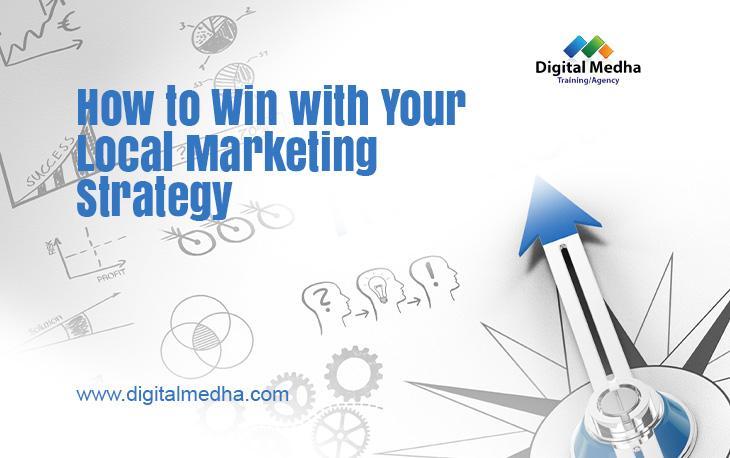Digital marketing has revolutionized how businesses reach and engage their target audiences. In 2025, the landscape of digital marketing channels continues to evolve rapidly, driven by technological innovations, shifting consumer behaviour, and platform advancements. This blog provides a comprehensive overview of the top digital marketing channels businesses and marketers must leverage to succeed in today’s competitive environment. In the world of digital marketing, channels are the various platforms and strategies used to reach and engage your target audience online. Each channel serves a unique purpose and can help you drive traffic, build brand awareness, generate leads, and convert customers. To run a successful digital marketing campaign, it’s essential to understand how these channels work and how they complement one another.
Below is a breakdown of the most important digital marketing channels and what makes each one powerful:
- Search Engine Optimization (SEO)
SEO (Search Engine Optimization) is the process of improving your website’s visibility on search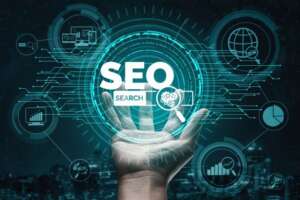 engines like Google, Bing, and Yahoo. The goal of SEO is to rank higher in organic (non-paid) search results when users search for keywords related to your business, products, or content.
engines like Google, Bing, and Yahoo. The goal of SEO is to rank higher in organic (non-paid) search results when users search for keywords related to your business, products, or content.
When your website ranks higher, more people can find it, visit it, and potentially become your customers or followers.
SEO remains a cornerstone of digital marketing. It focuses on enhancing websites and content to achieve better visibility and higher rankings on search engines like Google.. SEO drives organic traffic and improves visibility without direct advertising costs.
Key Components of SEO:
- On-page SEO: On-page SEO: Optimizing individual web pages (title tags, meta descriptions, keywords).
- Off-page SEO: Focuses on earning quality backlinks and strengthening your site’s reputation and authority across the web.
- Technical SEO: Involves optimizing your website’s infrastructure for speed, mobile compatibility, and smooth search engine crawling.
- Local SEO: Targeting local audiences through Google Business Profiles and local directories.
Why It Matters: SEO is cost-effective, sustainable, and crucial for long-term brand visibility.
Why is SEO Important?
- Drives Free Traffic: Unlike paid ads, SEO brings in organic traffic without on-going ad spend.
- Builds Trust & Credibility: Showing up on Google builds user confidence and positions your brand as credible and trustworthy.
- Better User Experience: SEO involves optimizing website speed, mobile usability, and content – making your site better for users.
- Long-Term Results: High-ranking content keeps attracting visitors over time, delivering on-going traffic without continuous effort.
- High ROI: SEO delivers one of the highest returns on investment compared to other digital marketing channels.
- Pay-Per-Click Advertising (PPC)
PPC refers to paid advertising on platforms such as Google Ads and Bing Ads. Advertisers pay a fee each time someone clicks on their ad. A digital ad model where businesses are charged only when a user clicks on their ad — turning each click into a potential lead or sale. Instead of earning visits organically through SEO, PPC allows you to buy visits to your website by placing ads on platforms like Google, Bing, Facebook, Instagram, LinkedIn, YouTube, and more.
each time someone clicks on their ad. A digital ad model where businesses are charged only when a user clicks on their ad — turning each click into a potential lead or sale. Instead of earning visits organically through SEO, PPC allows you to buy visits to your website by placing ads on platforms like Google, Bing, Facebook, Instagram, LinkedIn, YouTube, and more.
The most common example of PPC is Google Ads, where businesses bid on keywords and appear at the top of search results.
Popular Platforms:
- Google Ads: Search ads, display ads, shopping ads.
- Bing Ads: Similar to Google but often with lower competition.
- YouTube Ads: Video ads before, during, or after content.
Benefits:
- Immediate visibility.
- Highly targeted (demographics, location, device, interests).
- Scalable and measurable.
Best Practices:
- Use A/B testing.
- Focus on Quality Score.
- Optimize landing pages.
How Does PPC Work?
Here’s a simple breakdown of how a PPC campaign functions:
- Choose a Platform – Google, Facebook, Instagram, LinkedIn, etc.
- Select Target Audience – Based on demographics, keywords, interests, location, etc.
- Create Your Ad – Write ad copy, design banners, or record video ads.
- Set Your Budget & Bids – Define how much you’re willing to pay per click or per 1000 impressions.
- Launch & Monitor – Roll out your campaigns, keep a close eye on their performance, and fine-tune strategies to maximize impact.
- Social Media Marketing (SMM)
Social media platforms like Facebook, Instagram, LinkedIn, Twitter, Pinterest, and TikTok offer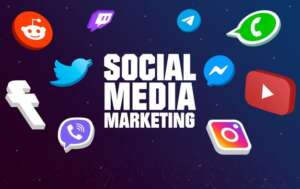 powerful avenues for engagement and brand building.
powerful avenues for engagement and brand building.
Types of Content:
- Organic posts: Regular updates, stories, polls.
- Paid promotions: Boosted posts, sponsored content.
- Video marketing: Reels, live videos, short-form clips.
Channel-Specific Strengths:
- Facebook/Instagram: B2C marketing, community building.
- LinkedIn: B2B networking, professional services.
- TikTok: Gen Z outreach, viral potential.
Success Tips:
- Know your audience.
- Maintain consistent branding.
- Use analytics to refine strategy.
- Content Marketing
Content marketing is about creating and distributing valuable, relevant content to attract and retain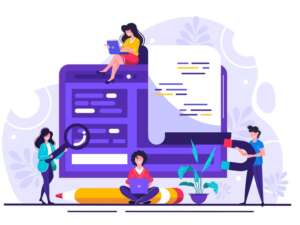 an audience. It complements SEO and builds trust.
an audience. It complements SEO and builds trust.
Types of Content:
- Blog posts: Educational and evergreen.
- Infographics: Visual storytelling.
- Ebooks/Whitepapers: In-depth knowledge.
- Podcasts/Webinars: Interactive and shareable.
Goals:
- Educate users.
- Solve problems.
- Build brand authority.
Distribution Channels:
- Company blogs.
- Guest posts.
- Email newsletters.
- Social media.
- Email Marketing
Email marketing delivers personalized messages directly to a user’s inbox. It is cost-effective and ideal for nurturing leads.
ideal for nurturing leads.
Strategies:
- Segmentation: Divide audience by interest or behavior.
- Automation: Send triggered emails based on user actions.
- Personalization: Use names, preferences, and history.
Types of Campaigns:
- Welcome emails.
- Promotional offers.
- Newsletters.
- Abandoned cart recovery.
Tools:
- Mailchimp
- Convert Kit
- HubSpot
- Influencer Marketing
Collaborate with trusted content creators who command loyal followings to amplify your brand’s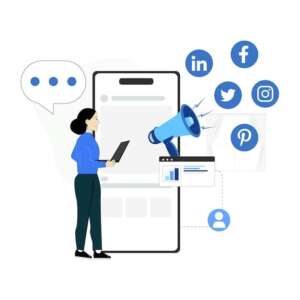 reach and credibility. It enhances credibility and reach.
reach and credibility. It enhances credibility and reach.
Types of Influencers:
- Nano (1K–10K followers)
- Micro (10K–100K)
- Macro (100K–1M)
- Mega (1M+)
Platforms:
- YouTube
- TikTok
Benefits:
- Higher engagement rates.
- Authentic content.
- Trust and relatability.
- Affiliate Marketing
Affiliate marketing is a performance-based channel where businesses reward affiliates for driving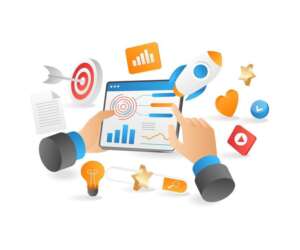 traffic or sales.
traffic or sales.
How It Works:
- Affiliates drive traffic and sales by sharing product links through their content platforms like blogs, websites, or social media channels.
- Sales tracked via unique referral links.
- Commission earned per sale/lead.
Popular Platforms:
- Amazon Associates
- ShareASale
- ClickBank
Ideal For:
- E-commerce
- SaaS companies
- Online courses
- Video Marketing
Videos are powerful tools for storytelling, tutorials, and engagement. Platforms like YouTube, Instagram Reels, and TikTok dominate video consumption.
Instagram Reels, and TikTok dominate video consumption.
Types of Videos:
- Explainers
- How-to
- Testimonials
- Behind-the-scenes
Benefits:
- Higher retention.
- Boosted SEO (especially on YouTube).
- Emotional connection with audiences.
- Mobile Marketing
With smartphones being the primary device for internet access, mobile marketing ensures brands are optimized for mobile users.
are optimized for mobile users.
Components:
- Mobile-optimized websites
- In-app advertising
- SMS campaigns
- Push notifications
Best Practices:
- Fast loading times
- Responsive design
- Click-to-call buttons
- Web Analytics and CRO (Conversion Rate Optimization)
Data is the backbone of digital marketing. Analytics tools like Google Analytics, Hotjar, and Crazy Egg help track performance and user behaviour.
Egg help track performance and user behaviour.
Key Metrics:
- Bounce rate
- Session duration
- Conversion rate
- ROI (Return on Investment)
CRO Techniques:
- A/B testing
- Heatmaps
- User surveys
- Voice Search & Smart Assistants
The rise of smart speakers (Alexa, Google Home) and voice assistants means marketers need to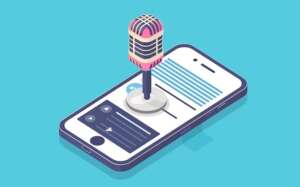 optimize for voice queries.
optimize for voice queries.
Tips:
- Use conversational keywords.
- Optimize for local search.
- Answer questions clearly in content.
- Online Public Relations (Digital PR)
Digital PR involves managing your online reputation through press releases, influencer outreach, and brand mentions.
brand mentions.
Activities:
- Publishing guest blogs
- Reaching out to online publications
- Crisis management on digital platforms
Benefits:
- Boosts SEO with high-authority backlinks
- Increases credibility
- Enhances online presence
- Chatbots & Conversational Marketing
Chatbots use AI to provide real-time customer support and interaction. Platforms like Facebook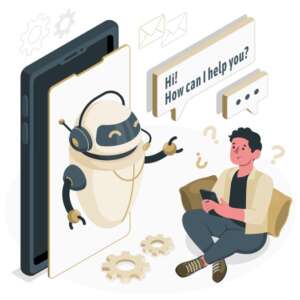 Messenger and WhatsApp are popular.
Messenger and WhatsApp are popular.
Advantages:
- 24/7 support
- Automated lead capture
- Personalized user experience
Tools:
- ManyChat
- Drift
- Intercom
- Programmatic Advertising
This involves automated bidding on digital advertising inventory in real-time, allowing marketers to target users more precisely.
target users more precisely.
Benefits:
- Data-driven targeting
- Greater ROI
- Real-time analytics
Ad Types:
- Display
- Video
- Native
Conclusion: Navigating the Multi-Channel Digital World
The digital marketing ecosystem in 2025 is vast and multi-dimensional. Choosing the right channels depends on your business goals, target audience, and resources. By understanding and strategically leveraging these channels, businesses can achieve better visibility, engagement, and conversions.
Whether you’re a budding entrepreneur, a seasoned marketer, or a business owner, keeping pace with these digital marketing channels is key to staying competitive in the ever-evolving digital world. So build your digital journey with top digital marketing course in Hyderabad Ameerpet.
FAQs on Digital Marketing Channels
- What are digital marketing channels?
Answer:
Digital marketing channels are platforms or tools used to communicate marketing messages to your audience online. These include search engines, social media, email, websites, and more. - What are the main types of digital marketing channels?
Answer:
The most popular digital marketing channels include:
- Search Engine Optimization (SEO)
- Pay-Per-Click Advertising (PPC)
- Social Media Marketing (SMM)
- Email Marketing
- Content Marketing
- Affiliate Marketing
- Influencer Marketing
- Mobile Marketing
- Video Marketing
- Which digital marketing channel is best for beginners?
Answer:
Social Media Marketing and Email Marketing are great starting points. They’re easy to learn, require low investment, and are highly effective for building brand awareness and engagement. - What is the role of SEO in digital marketing?
Answer:
SEO (Search Engine Optimization) helps your website rank higher on search engines like Google. It drives organic (free) traffic by optimizing your site’s content and structure. - How does PPC differ from SEO?
Answer:
PPC (Pay-Per-Click) is a paid advertising model where you pay for each click on your ad, while SEO involves optimizing content to get organic traffic. PPC gives quicker results; SEO builds long-term visibility.
- Is PPC suitable for beginners?
Yes, but beginners should start with a small budget, learn targeting strategies, and monitor performance closely to avoid overspending. - What’s the difference between Google Ads and social media ads?
- Google Ads target people actively searching.
- Social media ads target based on interests, behavior, and demographics.
8.What is content marketing?
It’s a strategy that uses valuable content (like blogs, videos, or infographics) to attract, educate, and engage an audience — ultimately leading to conversions.
- Is blogging still effective in 2025?
Absolutely. Blogging helps with SEO, builds authority, and educates your audience. It remains a foundational strategy for content marketing. - Why is tracking and analytics important in digital marketing?
Without data, you’re marketing in the dark. Analytics help you measure performance, optimize campaigns, and make informed decisions. - What’s the first tool I should learn?
Start with Google Analytics 4 and Google Search Console to understand how users find and interact with your website.

